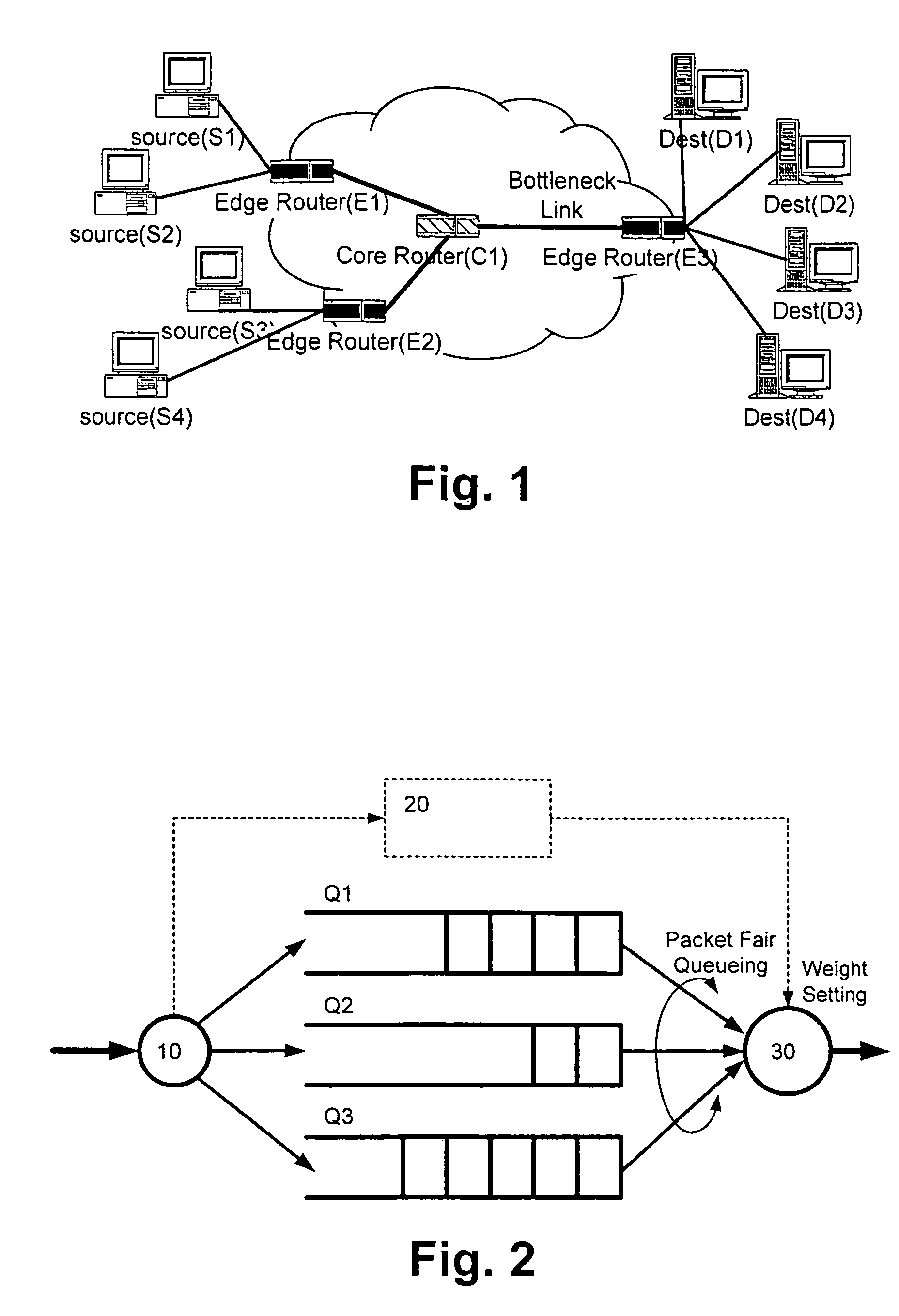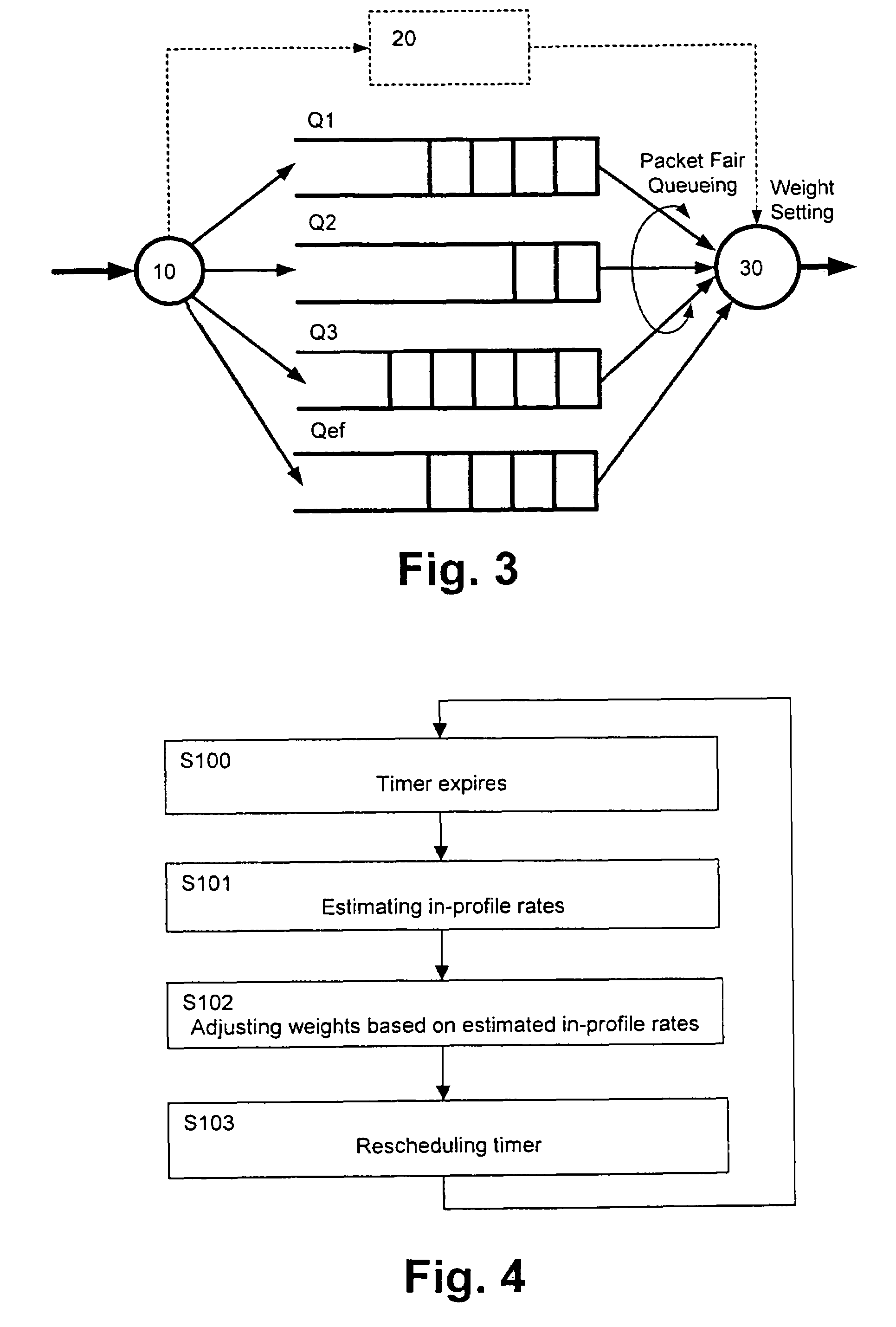Self-adaptive scheduling method and network element
a scheduling method and network element technology, applied in the field of methods and network elements, can solve the problems of non-responsive flow performance or fairness of data packets belonging to different af classes, and the unsolved problem of how to deal with data packets belonging to different af classes, and achieve the effect of fairness between different af traffic classes
- Summary
- Abstract
- Description
- Claims
- Application Information
AI Technical Summary
Benefits of technology
Problems solved by technology
Method used
Image
Examples
Embodiment Construction
[0033]The preferred embodiment will now be described based on a DS network architecture as shown in FIG. 1.
[0034]In the network topology according to FIG. 1, four data sources S1 to S4, four destinations D1 to D4, three edge routers E1 to E3 and one core router C1 are provided. As can be gathered from FIG. 1, the link between the core router C1 and the edge router E3 on the right side is a bottleneck link in this topology.
[0035]It is assumed that the source S1 and the source S3 generate TCP traffic, while the source S2 and the source S4 generate UDP traffic. In this case, fairness between the TCP traffic and the UDP traffic can be guaranteed if the weights of the AF class or sub-queues for the TCP traffic and the UDP traffic at the bottleneck link are set proportional to the total target rate of the TCP traffic and the UDP traffic, i.e. the sum of the traffic rates of the sources S1 and S3 for the TCP traffic and the sum of the target rates for the sources S2 and S4 for the UDP traf...
PUM
 Login to View More
Login to View More Abstract
Description
Claims
Application Information
 Login to View More
Login to View More - R&D
- Intellectual Property
- Life Sciences
- Materials
- Tech Scout
- Unparalleled Data Quality
- Higher Quality Content
- 60% Fewer Hallucinations
Browse by: Latest US Patents, China's latest patents, Technical Efficacy Thesaurus, Application Domain, Technology Topic, Popular Technical Reports.
© 2025 PatSnap. All rights reserved.Legal|Privacy policy|Modern Slavery Act Transparency Statement|Sitemap|About US| Contact US: help@patsnap.com



